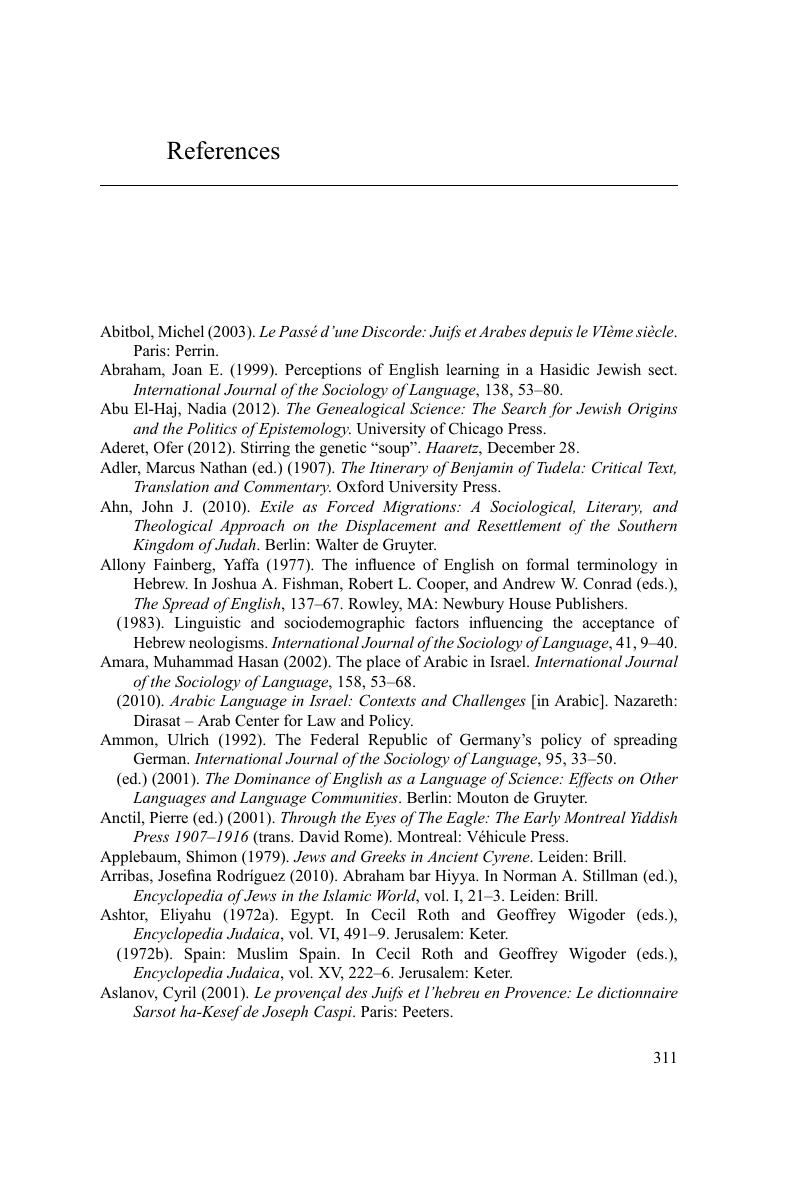Book contents
- Frontmatter
- Dedication
- Contents
- List of maps
- Preface and acknowledgments
- Glossary
- 1 Is Hebrew an endangered language?
- 2 The emergence of Hebrew
- 3 Hebrew–Aramaic bilingualism and competition
- 4 Three languages in Hellenistic and Roman Palestine
- 5 From statehood to Diaspora
- 6 The Arabian and African connections
- 7 The spread of Islam
- 8 The Jews of France
- 9 The Jews of Spain and their languages
- 10 Loter-Ashkenaz and the creation of Yiddish
- 11 The Yavanic area: Greece and Italy
- 12 Jews in Slavic lands
- 13 Linguistic emancipation and assimilation in Europe
- 14 Britain, its former colonies, and the New World
- 15 Islam and the Orient
- 16 The return to Zion and Hebrew
- Appendix Estimated current status of Jewish languages1
- Notes
- References
- Index
- References
References
Published online by Cambridge University Press: 05 June 2014
- Frontmatter
- Dedication
- Contents
- List of maps
- Preface and acknowledgments
- Glossary
- 1 Is Hebrew an endangered language?
- 2 The emergence of Hebrew
- 3 Hebrew–Aramaic bilingualism and competition
- 4 Three languages in Hellenistic and Roman Palestine
- 5 From statehood to Diaspora
- 6 The Arabian and African connections
- 7 The spread of Islam
- 8 The Jews of France
- 9 The Jews of Spain and their languages
- 10 Loter-Ashkenaz and the creation of Yiddish
- 11 The Yavanic area: Greece and Italy
- 12 Jews in Slavic lands
- 13 Linguistic emancipation and assimilation in Europe
- 14 Britain, its former colonies, and the New World
- 15 Islam and the Orient
- 16 The return to Zion and Hebrew
- Appendix Estimated current status of Jewish languages1
- Notes
- References
- Index
- References
Summary

- Type
- Chapter
- Information
- The Languages of the JewsA Sociolinguistic History, pp. 311 - 341Publisher: Cambridge University PressPrint publication year: 2014



